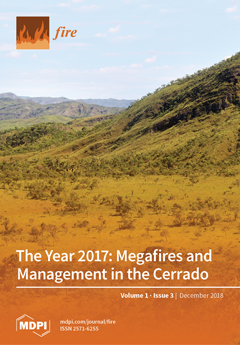Deforestation and the use of fire to clear land have drastic effects on ecosystem functioning and compromise essential ecosystem services, especially in low-income tropical countries such as Madagascar. We evaluated the effects of local slash-and-burn practices on soil nutrients and arbuscular mycorrhizal (AM)
[...] Read more.
Deforestation and the use of fire to clear land have drastic effects on ecosystem functioning and compromise essential ecosystem services, especially in low-income tropical countries such as Madagascar. We evaluated the effects of local slash-and-burn practices on soil nutrients and arbuscular mycorrhizal (AM) fungi abundance in a southwestern Madagascar forest. Nine sampling plot pairs were established along the border of a reserve within the Fiherenana–Manombo (pk-32) complex, where soil and seedling root samples of the endemic tree
Didierea madagascariensis were taken. We analysed soil extractable PO
43−, NH
4+, and NO
3− as well as total soil carbon and nitrogen. We analysed AM fungal abundance in soil and roots through fatty acid marker analysis (NLFA and PLFA 16:1ω5), spore extraction, and root staining. Slash-and-burn caused an increase in pH and doubled the plant available nutrients (from 7.4 to 13.1 µg PO
43− g
−1 and from 6.9 to 13.2 µg NO
3− g
−1). Total C and total N increased in deforested soil, from 0.6% to 0.84% and from 0.06% to 0.08%, respectively. There was a significant decline in AM fungi abundance in soil, with a decrease in soil NLFA 16:1ω5 from 0.2 to 0.12 nmol/g. AM fungi abundance in
D. madagascariensis roots was also negatively affected and colonization decreased from 27.7% to 16.9% and NLFA 16:1ω5 decreased from 75.7 to 19 nmol/g. Together with hyphal network disruption, increased nutrient availability caused by burning is proposed as an explanation behind AM decline in soil and roots of
D. madagascariensis. This is the first study to report the effects of slash-and-burn on AM symbiosis in Madagascar’s dry forests, with likely implications for other tropical and subtropical dryland forests worldwide where slash-and-burn is practiced.
Full article





